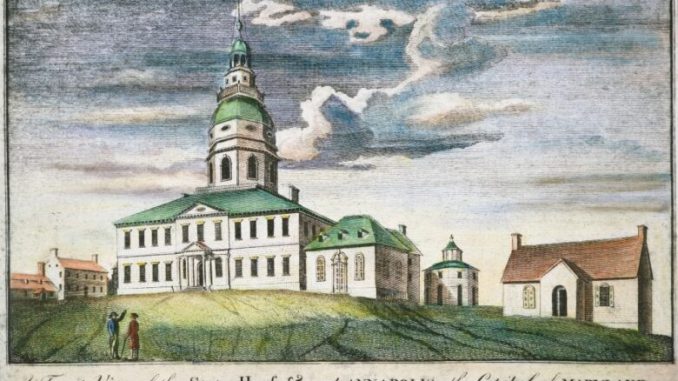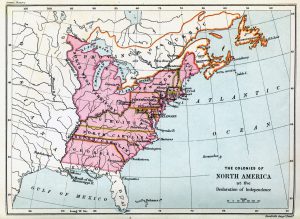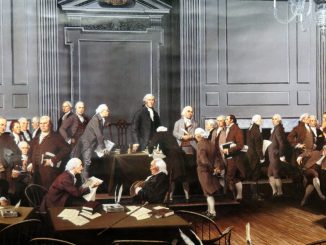
The Founding of the First Government of the United States…a Timeline.
The Founding of The United States of America did not begin with a single event. Our Founding was prompted by a series of events that spanned decades.
The Experience of Our Founders
Founding Fathers and Mothers of the U.S.A. were learned citizens with great knowledge of European governance and considerable experience with self-government before the writing of the Constitution. Perhaps more importantly, the Founders were grounded in a knowledge of humankind and the forces of both good and bad government.
Their combined experiences and knowledge and human truths, along with the well-documented strong grounding in their faiths, coupled with the trials handled as a young nation culminated in the Declaration of Independence and the subsequent writing of The Constitution of the United States of America.
A constitution is a set of rules that determines how power will be used legitimately in a state. Contrary to popular belief, few governments have been created by written constitutions. The Founders understood the dangers of several forms of government and held confidence in the formation of a country based on a Constitution and in the establishment of a Constitutional Republic.

The table, below, lists significant events in the life of a new country that led to the Founding of The United States of America.
The Timeline of the Events Which Prompted the Founding of the United States of America:
| Date | Event |
| 1607 | First permanent British colony at Jamestown, Virginia |
| 1620 | Pilgrims land in Massachusetts |
| 1620–1732 | Founding of the thirteen colonies; colonists govern themselves and develop idea of limited government |
| 1641 | Massachusetts Body of Liberties passed; it protects rights of individuals |
| 1764 | Sugar Act taxes sugar |
| 1765 | Stamp Act taxes a variety of goods |
| 1770 | Boston Massacre |
| 1773 | Boston Tea Party |
| 1775 | Revolutionary War begins |
| 1776 | Second Continental Congress convenes; Declaration of Independence is written |
| 1781 | Ratification of the Articles of Confederation |
| 1783 | Treaty of Paris ends the Revolutionary War |
| 1786 | Shays’ Rebellion begins in western Massachusetts |
| 1786 | Annapolis Convention calls on Congress to convene a meeting to fix the Articles |
| 1787 | Constitutional Convention |
| 1787–1789 | Battle to ratify the Constitution |
| 1789 | Constitution ratified; the new United States government takes power |
The Founding of the Original Thirteen Colonies

The establishment of the original thirteen colonies brought about the initial concepts of humans being able to govern themselves, a novel idea unheard of in Europe. These thirteen colonies ended up being united by their intent to govern themselves, to create their own destinies, and escape from British rule and monarchy.
The Massachusetts Body of Liberties
As a guidance for the General Court of the time, the Massachusetts Body of Liberties was published in 1641. It is considered the first legal code established by European colonists in New England. It was composed entirely of a list of freedoms, rather than a list of restrictions, as a guide to the courts.
Shays’ Rebellion
Shays’ Rebellion was a protest and uprising that served to expose how the Articles of Confederation left its newly found government woefully inadequate to protect itself from attack. The Founding Project’s articles on the Articles of Confederation (two articles) and Shays’ Rebellion highlight information on both. https://thefoundingproject.com/forgotten-articles-confederation/ https://thefoundingproject.com/articles-confederation-part-2-confederacy/ https://thefoundingproject.com/shays-rebellion-constitution-2/
The Annapolis Convention
Cited as an initial stepping stone that led to developing the groundwork for the eventual U.S. Constitution, the convention was originally intended to regulate trade between the states during a time of economic difficulties and political strain. The convention was held September 11-14, 1786 in Annapolis, the capital of Maryland. Discussions at the convention led to the realization that the current form of government, the Article of Confederation, were not serving the best interests of a new nation. The Annapolis Convention came on the heels of Shay’s Rebellion, which had further called attention to the failings of the Articles of Confederation when it came to protecting the newly formed nation.
The Next Significant Steps
Immediately following the ratification of The Constitution of the United States, the Bill of Rights with the first ten Amendments to the Constitution were added to the Constitution to create the most lasting freedom any country in history has ever experienced.
This is the brief synopsis and timeline of how the American story began. Being brief, it does not speak of the hardships, struggles and fights of the new nation and its quest for freedom. This timeline, though, does give us a quick picture of the early days of our country.
-The Founding Project Admin Staff Writers
Sources: History.com, LeadershipAmerica.org, MountVernon.org, The Bill of Rights Institute, The U. S. Constitution Center, The National Constitution Center, National Archives / Featured Image: Annapolis Convention – Bill of Rights Institute image





A hell of a lot of citizens need to read this and be taught about the founding of our country. Too many of us never had the full civics program.
We agree. A full civics program is meant to be taught every year of schooling and cannot possibly replaced by one government class. That’s why TFP began!